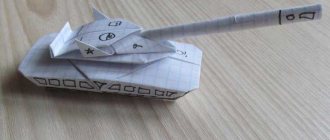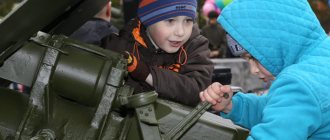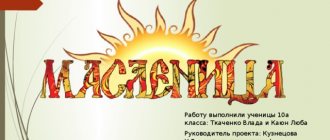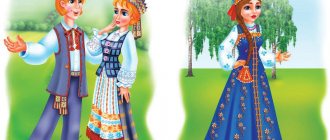Methodology for introducing preschoolers to the history of their native land
It is important to note that the work being carried out is effective only if children actively interact with adults (parents and educators). Thus, excursions, joint holidays and quizzes create powerful motivation for learning in children, providing the emotional background against which the assimilation of quite complex information occurs easily and naturally.
Thus, the created conditions act as a sociocultural environment that creates optimal conditions for the formation of a holistic picture of the world in children, the education of patriotism, the foundations of citizenship, as well as interest in their small homeland.
4. Practical stage
The original work plan included:
Cooperation with the school library, with the school museum, with the rural cultural center.
Excursions along the streets of the village, to the monuments.
Meetings with interesting people.
Educational games, quizzes, competitions, musical and literary evenings.
Collection of materials about the history of the village, its streets, and kindergarten.
Exhibitions of drawings, photographs, crafts on local history topics, collecting collections.
To increase the level of children's knowledge about their native village and their motivation for further activities, local history activities were included in the work plan. Together with the children, we took walks around the village, paid attention to the beauty and cleanliness of the streets, buildings, flower beds, and noted what new buildings and playgrounds had appeared. The children were interested to find out why this or that street has such a name, what interesting buildings and institutions are there, etc. The children also visited the fire department, library, school, post office, etc. Children got acquainted with the professions of people, with the work of their parents. Took part in the inter-district event “My Small Motherland!” on the territory of KFOR village. Zhediaevka.
All this helped me get to know my village and profession better. The work of people, value and respect this work. On May 9, children annually lay flowers at the monument to fallen heroes, participated in the “Soldier’s Triangle” event, visited WWII veterans and war children, and together with their parents took part in the “Immortal Regiment” procession.
In my work I used press materials from the Ulyanovsk region (magazines “Simbik”, “Monomakh”), as well as the publication by Yu. Mordvinov “A Look into the Past” (from the history of the villages of the Staromainsky district), which the author painstakingly collected in archives and libraries for many years information and facts scattered across different funds.
Environmental education is an integral part of the project. Nurturing love for one’s native land is inextricably linked with caring for nature. The nature of the Staromainsky district is amazing, absolutely amazing in its beauty. The most beautiful rivers are here. They are famous for their mushrooms and berries. The cleanest springs and ponds rich in fish, unique natural monuments. The task of adults is to help them see all this and instill pride and love for their city, their native land. Therefore, we recommend that parents spend more time in nature with their children. These are exhibitions of crafts made from natural materials, exhibitions of drawings “Together we draw autumn (winter, spring, summer), participation in charity events, environmental campaigns (greening areas of the kindergarten), trips to the river, meadow, forest clearing, participation in nature festivals held in kindergarten. All this work not only taught sensitivity, kindness, and responsiveness, but also served to unite the children and developed their activity and creative abilities.







